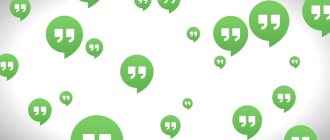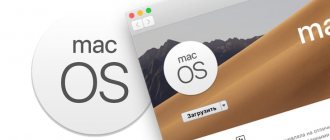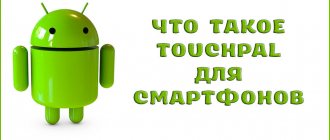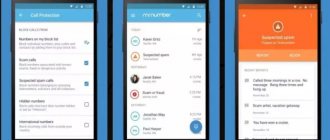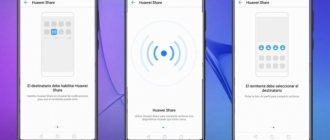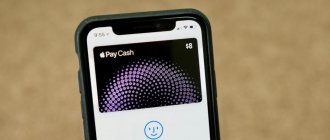Whether you like it or not, email is a very important element of communication today. For both business and personal. In addition to working moments, registration on various portals, confirmation and ordering of goods - all this happens with one or another participation of e-mail. One of the most reliable services is Gmail, and using it on your Android smartphone will be much easier if you take advantage of its very useful features.
First, make sure you're using the latest version of Gmail by opening the Play Store and checking for updates. Now that we're all set, let's simplify our Gmail experience.
Save memory on your smartphone
Email attachments can take up a lot of space. Therefore, one of the ways to save your device's memory is to make sure that you do not download too much mail on your gadget.
To do this, check the built-in synchronization settings. In the Gmail app itself, you can select Settings and tap your email address to see if your messages are set to sync. On the same screen, you can also configure how many days email attachments are cached on your smartphone/tablet.
Making the GMail web client convenient
If you try really hard, the GMail web client can be brought to a state where it is more or less pleasant to use. This is what it looks like for me now:
Below the cut is a story about what features I use and how. The theme is high contrast, the barely gray lines of the default theme piss me off. You can’t hint so subtly that you have to guess whether something is drawn there or not.
Let's go from left to right.
I once read an article about how Google uses email. They say they automate everything they can, create a bunch of shortcuts and filters. “Hmm, that’s logical,” I thought, and I did the same. Frequently used shortcuts are in the panel on the left, rare ones are hidden with the “show if there are unread messages” setting:
There are even two hierarchical labels (hierarchy does not affect anything except the display method). The farm is serviced, as bequeathed, by a bunch of filters:
The interface for creating/managing filters in GMail is the worst of all; apparently, it is considered an advanced feature:
Just in case, it works like this: in the “Includes the words” field we write a query like:
from:(livejournal.com OR ljplus.ru OR habrahabr.ru OR disqus.net)
or (the hardest one I have):
(from:(aboutecho.com OR js-kit.com) OR to:(aboutecho.com OR js-kit.com) -mon.jacknyfe.net -fogbugz.com -offtopic -offtop -fyi -[pr] -jfi -jfyi)
This means taking all the letters going either to my work domains or from our domains, minus letters with keywords that I don’t need in the main folder - they will be sorted into subfolders with separate filters. For example, aboutecho/offtopic subfolder:
(offtop OR fyi OR jfyi OR jfi OR [PR]) AND (from:aboutecho.com OR to:aboutecho.com)
In the actions, of course, Apply label, Skip Inbox (see below), Never send it to Spam (since I’m setting up a filter, I don’t need Gmail to guess about what I absolutely know is important to me).
Thus, my Inbox is almost always empty; very rare personal letters go there, something out of the everyday routine. As a rule, such letters require a response, so my inbox is also a list there. If I start a relationship with a person (freelance project, for example), I will create a new filter for him. I don’t need any poultices like “let gmail tell you which emails are important to you” or several inboxes.
The only thing that the filters really lack (besides the human interface) is the ability to filter by contact groups. Unfortunately, nothing can be done about this yet.
Next, as you can see, is the threads panel. Enabled by the amazing Preview Pane plugin from the Labs section:
In this form, I finally realized that GMail can be convenient. However, it does impose certain requirements on the width of the monitor.
If you dig deeper into the settings, you can find another nice detail - replace the mystical icons on the buttons with text:
Finally, it is absolutely necessary to keep cards with photographs in the mail book of everyone with whom you communicate.
This way, threads are much easier to perceive - it’s immediately clear who said what, and in general it almost looks like light threads on social networks or Habr’s comments.
Yes, you can assign a photo to a person yourself, if he has not yet taken care of it. If you yourself have not yet taken care of this, immediately fill in the gap, then your recipients will see your letters immediately with a picture.
On top of all this I threw a little user css to my taste using the Google Chrome plugin Stylebot. It hides the advertising column on the right (in vertical preview pane mode there is a completely horse column with advertising), fixes indents here and there, mutes the recipient's name so that the theme stands out better, facilitates scrollbars and a few other little things that the layout designers of such a large web-oriented company as Google they manage to make it into production.
And when I can fix it with a flick of my wrist, I want web applications to take over the entire planet immediately. I understand that very few people can use user css, but personally I enjoy this function regularly (yes, Habr is also a little better in terms of fonts).
A window with GMail is launched as a desktop application, this is a feature in Google Chrome. This is quite a detail.
It seems that's it now. He told me everything he knew. I would be happy to hear other useful tips in the comments.
Make your emails look better
Brevity, as we know, is the sister of talent. However, this does not mean that all your posts should be without paragraph and text formatting. There are times when italics, bold, or bold text colors can help convey the message better.
To access formatting options, long press on the desired area of the screen to select the text you want. Then select the formatting function and you will have access to a variety of options.
Choosing an email client for Android devices: Gmail and Inbox from Gmail
Table of contents
- Introduction
- Most Popular: Gmail
- Acquaintance
- Interface and operation
- Settings
- Acquaintance
- Background: Inbox App Access and Add-on
- Interface and operation
- Settings
Introduction
Thanks to the Internet, people have received many benefits, the main one of which is e-mail. How can you live without communication? No way! So, the Internet solves this problem once. After all, “delivery” of that same letter will take a matter of seconds, not like our mail. But let’s put the sad moments aside and move on to testing email clients for devices based on Android OS.
There are very, very many of them, and there are both official versions - mobile versions of this or that service, and unique applications created by third-party developers. There are really a lot of programs, but we will try to test the most relevant and interesting ones for you.
So, our review will look at two applications for using the Gmail service. The official Gmail client is the most popular email client on Android gadgets and does not need any additional description, and Inbox from Gmail is a new creation by Google. Perhaps it’s time for “old man” Gmail to retire?
Most Popular: Gmail
announcements and advertising
2080 Super Gigabyte Gaming OC for 60 rubles.
Compeo.ru - the right comp store without any tricks
RTX 2060 becomes cheaper before the arrival of 3xxx
Ryzen 4000
series included in computers already in Citylink
The price of MSI RTX 2070 has collapsed after the announcement of RTX 3xxx
Core i9 10 series is half the price of the same 9 series
The price of memory has been halved in Regard - it’s more expensive everywhere
Acquaintance
I think Gmail doesn’t need any special introduction, since it is the most popular email service, by global standards. It works quickly, efficiently, everything is simple and intuitive. Most users use it, is it really that good? And in the mobile version too? Let's check it out.
Interface and operation
All Google apps look, if not perfect, then very close. The application interface, naturally, is made in the modern Material Design style: bright and catchy colors, flat elements and smooth transitions between graphic elements.
On the main screen we have all incoming messages. We see who the mail came from, his avatar, the subject of the message itself and its content, in the form of a few words, this depends on the screen size of the gadget used. There is also additional information about the time or indicating the presence of an attachment to the message. And at the end there is an asterisk, which we can use to indicate important messages to quickly highlight them from the crowd.
Particularly pleasing is the support for gestures. Sometimes they can save you a couple of clicks on the screen. So, swiping right or left on the message preview will send it to the archive. This will allow you to deal with annoying mailings or unnecessary messages in a matter of seconds.
But swiping down will update the inbox feed. This is also very, very convenient. So all actions are carried out naturally, on a subconscious level, as if this is how it should be.
In the lower left corner there is a circle with a pencil, which allows you to start writing a message. And there everything is more or less standard. Enter the recipient's email address, the subject of the message and the text of the message itself.
If you have several email accounts on your device, you can choose which one the message will be sent from. Additional recipients can be CC'd on the message, and there are even hidden carbon copies. Yes, this is not new, but many mobile versions of applications lack such an important function.
Naturally, you can attach some file to the message, for example, a picture, video, document, etc.
I must say that everything is done simply, minimalist and restrained. Their eyes are not wide open, but they also have something to be happy about.
If we open any message, we will see all the necessary information, its text, sender, and so on. We can quickly respond or forward the message.
If anyone hasn’t noticed, at the very top of the application there is a red panel, it also says “Inbox”. It has a search button. That is, if we need to find a message by a specific word, phrase or nickname, then please enter and receive a response.
On the same red panel there is a menu button, after clicking it, a side panel with additional options opens.
Firstly, there we can select the main account, this is if you have several mail accounts on your device. We also get access to other message folders, for example, flagged, important, sent, drafts, spam, and so on. These categories are nothing unusual. By the way, notifications about messages from the Spam folder do not arrive.
Well, at the very end of the list there are settings and help about the Gmail application.
This is what notifications about an incoming message look like. Interestingly, the Gmail app has a widget. It can display incoming messages and open them directly in the application.
Settings
The application settings are not so empty, but what settings are within our control? The settings are divided into two types: general and for each account, respectively.
We will start, of course, with general settings. There is nothing “global” there. We can disable the photo of the sender of the message to increase the free area on the main screen of the application, enable the “reply all” function so as not to confirm sending a copy of the message to each recipient. There is a function to automatically scale messages to fit the smartphone screen so that the text of the message looks neat. By the way, by swiping left or right on a message, you can select not only archiving messages, but also deleting them completely.
The auto-switch function deserves special attention. If, for example, we deleted a message, then we can configure the transition either to the next or previous message, or even to the list of letters.
And if we are afraid of losing messages, accidentally deleting them, or moving them somewhere, we can enable the action confirmation function.
The account-specific settings offer fairly simple but flexible options.
We can adjust message folders by adding categories such as: unsorted, social networks, promotions, alerts, forums. This will be convenient for those who use one box as work and personal. All messages will be divided into categories, and it will be very convenient to find what you need there. And order will never be superfluous, even if you have several accounts. However, whether you use this “innovation” or not is your choice.
Next are the alert settings. You can select an incoming notification ringtone, vibration, LED indication (if your smartphone has one) and similar settings. There, in the sound settings, as surprising as it may sound, there is a synchronization setting. That is, we select the period after which messages will be “downloaded” from the server to our mobile gadget.
You can also set up a signature and an autoresponder - very useful things, especially for corporate users. I think that it is not at all worth discussing the practical benefits of this or that function, since this is already clear.
Well, at the end there are account synchronization parameters. There are no questions, but why should this same function, only with reduced capabilities, be placed in the call center!? This is not clear even to me.
Similar settings will be available for our other accounts, of course, if they are on the device. Accordingly, you can set up different sounds for incoming messages and already know in advance whether they are bothering us from work? And put your smartphone in the far pocket.
Unfortunately, there are no more flexible interface settings, and indeed detailed parameters in the application.
Conclusions on Gmail
Of course, Gmail is a good email service with a good client for mobile devices. It is simple and intuitive to use and looks modern, but the red color may not be to everyone’s taste.
The application has no problems with functionality and capabilities. Signature, auto-reply and other functions are pleasing. True, I didn’t come across anything “cosmic” or incredible; only all the essentials were present.
So, Gmail is one of the ideal email clients that other applications can and should emulate.
| Developer | Google Inc. |
| Price | For free. |
| Requirements | For OS Android (new interface for OS Android 4.0.3 and later). |
